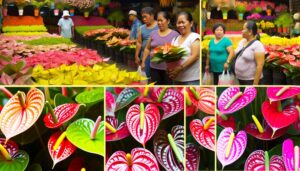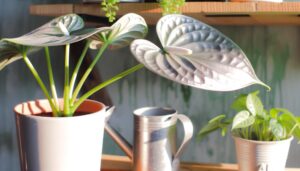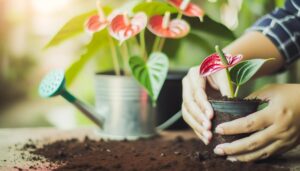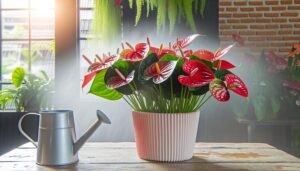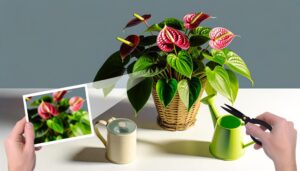3 Essential Tips for Anthurium Besseae Aff Care
To care for your Anthurium Besseae Aff, start by watering it with distilled or rainwater until it drains from the bottom, ensuring the soil retains moisture but drains well. Position the plant in bright, indirect sunlight, ideally near an east or north-facing window, as direct light can scorch its leaves.
Use a mix of orchid bark, perlite, and peat moss to maintain well-draining, aerated soil, and keep humidity levels between 60-80%. Regularly monitor the plant for signs of overwatering or inadequate light conditions to keep it thriving.
With these essentials in hand, there’s much more to uncover.
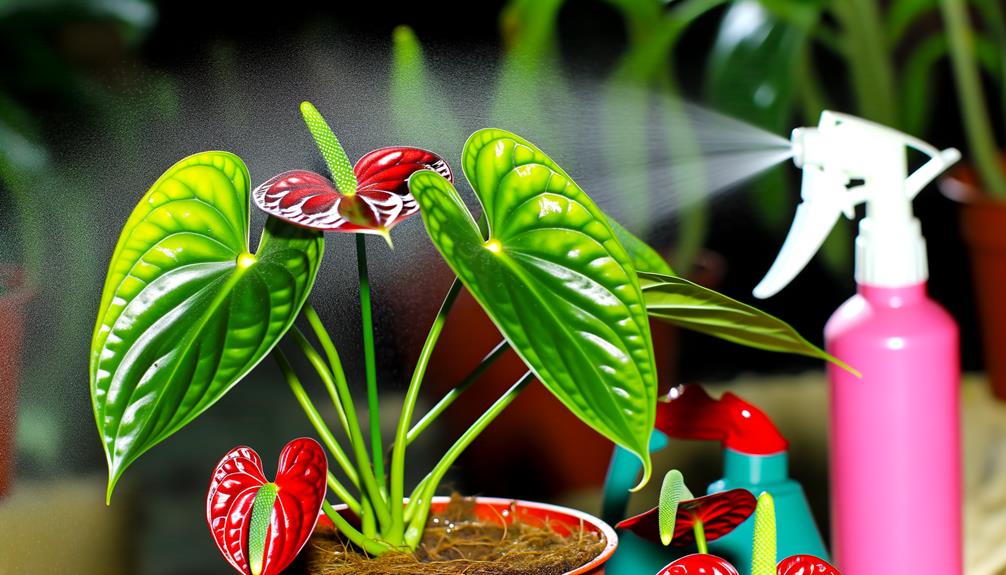
Key Takeaways
- Use distilled or rainwater for consistent watering to avoid mineral buildup.
- Place in bright, indirect sunlight and avoid direct exposure to prevent leaf scorching.
- Ensure soil is well-draining yet moisture-retaining using a mix of orchid bark, perlite, and peat moss.
- Maintain high humidity levels between 60-80% using a humidifier or water-filled tray.
- Regularly check soil moisture and avoid overwatering to prevent root rot.
Watering Techniques

Proper watering techniques are essential for maintaining the health and vibrancy of your Anthurium Besseae Aff. Begin by using distilled or rainwater, as tap water’s minerals can harm your plant.
Make sure the soil is well-draining yet retains moisture; a mix of orchid bark, peat, and perlite works best. Water thoroughly until it drains from the bottom, but don’t let the plant sit in water.
Aim for a consistent watering schedule, typically once a week, adjusting based on humidity and season. Check the top inch of soil; if dry, it’s time to water.
Overwatering can lead to root rot, so monitor your plant’s overall appearance. With proper care, you’ll help your Anthurium thrive, enhancing its beauty for everyone’s enjoyment.
Ideal Light Conditions
Anthurium Besseae Aff thrives best in bright, indirect sunlight, which mimics its natural understory habitat. Place your plant near an east or north-facing window, where it can receive ample diffused sunlight. Direct sunlight can scorch the leaves, so avoid placing it in the path of intense rays.
If natural light is insufficient, consider using grow lights with a spectrum that supports tropical plants. Rotate the plant periodically to guarantee even light distribution and prevent lopsided growth.
Monitor leaf color; pale or yellowing leaves may indicate excessive light, while dark, leggy growth suggests inadequate light. By paying attention to these cues, you’ll help your Anthurium flourish, ensuring it remains a beautiful, healthy addition to your space.
Soil and Humidity
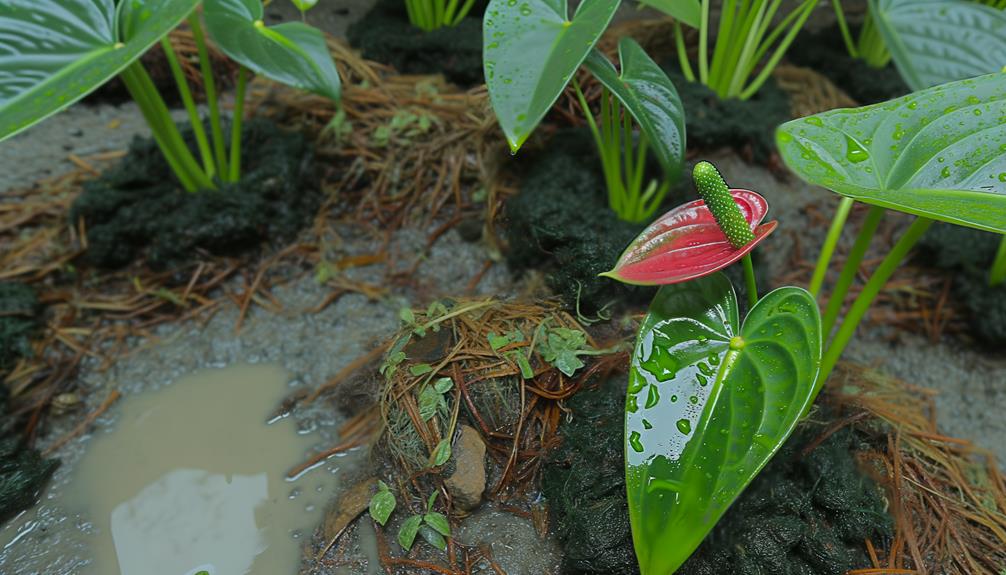
To secure your Anthurium Besseae Aff remains lush and vibrant, focus on providing well-draining, aerated soil rich in organic matter and maintaining high humidity levels between 60-80%.
Use a mix of orchid bark, perlite, and peat moss to create the ideal soil. This combination guarantees proper root aeration and prevents waterlogging.
Maintain humidity by placing a humidifier nearby or setting the pot on a tray filled with water and pebbles. Misting the leaves regularly can also help, but avoid waterlogging the soil. Monitoring humidity with a hygrometer ensures best conditions.
Conclusion
Caring for Anthurium besseae aff doesn’t have to be challenging. Remember, 70% of plant issues stem from incorrect watering, so mastering this is vital.
Guarantee it receives bright, indirect light, and maintain high humidity with a well-draining soil mix. By following these essential tips, you’ll create a flourishing environment for your plant.
With the right care, your Anthurium besseae aff will reward you with vibrant blooms and lush foliage. Happy growing!

